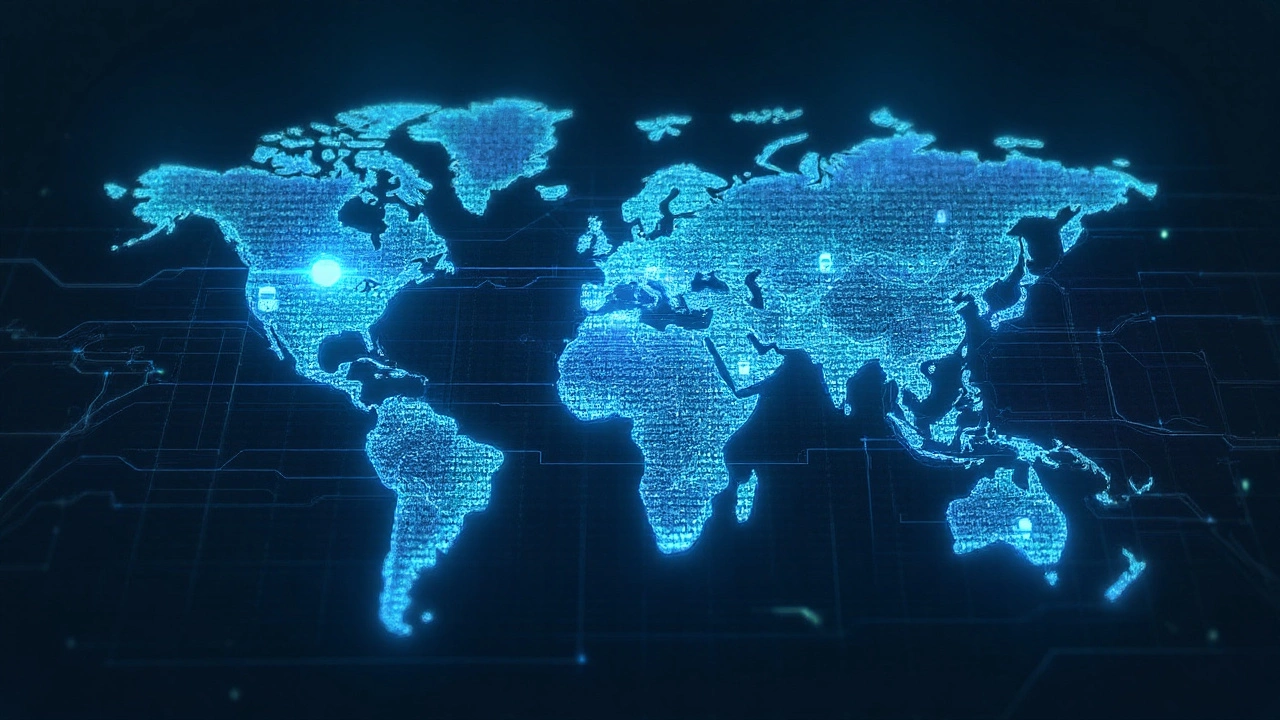Global Cybercrime: What It Is and How to Beat It
When you hear the word "cybercrime," you probably think of hackers, phishing emails, or ransomware. That's the core of it, but the reality stretches far beyond a single hack. Global cybercrime means criminal activity that crosses borders, uses the internet, and targets anyone with a digital connection. From big corporations to everyday users, the threats are real and growing fast.
Why should you care? A single data breach can expose personal details, drain bank accounts, or ruin a company's reputation. In 2023, the world saw over 4,000 ransomware attacks on health systems alone, causing millions in losses. The impact isn’t just financial; it erodes trust in online services and can even threaten national security.
Common Types of Global Cybercrime
Most people recognize phishing – fake emails that lure you into giving passwords or credit card numbers. But there are other big players:
- Ransomware: Malware that locks files until a ransom is paid. It often spreads through malicious attachments.
- Business Email Compromise (BEC): Criminals spoof company executives to trick employees into sending money.
- Credential Stuffing: Using leaked usernames and passwords to break into multiple accounts.
- Supply Chain Attacks: Hacking a trusted vendor to gain access to many downstream users.
Each attack method exploits a different weak spot, but they all share one thing: they rely on human error or outdated security.
Legal Landscape Around the World
Countries are racing to catch up with the digital threat. The United Nations has a convention on cybercrime, but enforcement depends on national laws. In the United States, the Computer Fraud and Abuse Act (CFAA) and the Cybersecurity Information Sharing Act (CISA) provide tools for prosecution and information sharing.
Europe leans on the GDPR, which forces companies to report breaches within 72 hours and imposes heavy fines for non‑compliance. India introduced the Information Technology (IT) Act and recent amendments target ransomware and data theft. While the specifics differ, the common goal is to create clear penalties and encourage better security practices.
Even with laws in place, prosecution can be tricky. Attackers hide behind VPNs, proxy servers, and cryptocurrencies, making it hard to trace them across borders. International cooperation—through agencies like Interpol and Europol—is essential to bring cybercriminals to justice.
Practical Steps to Protect Yourself
Legal frameworks can’t stop a phishing email from landing in your inbox. Here are five easy habits you can adopt today:
- Use strong, unique passwords. A password manager can generate and store them securely.
- Enable two‑factor authentication (2FA). Even if a password is stolen, a second factor blocks unauthorized access.
- Keep software updated. Patches fix known vulnerabilities that hackers love to exploit.
- Be skeptical of unexpected links. Hover over URLs, verify the sender, and avoid downloading attachments from unknown sources.
- Back up important data regularly. If ransomware hits, you can restore files without paying a ransom.
For businesses, the stakes are higher. Conduct regular security audits, train employees on phishing awareness, and consider cyber‑insurance to cover potential losses.
Cybercrime isn’t a distant threat—it’s happening right now, and it crosses every border. Understanding the common attack types, knowing the legal backdrop, and practicing solid security habits give you the best chance to stay safe. Keep learning, stay alert, and treat every digital interaction as a potential risk worth checking.

Top Country for Cyber Crime: Global Rankings, Trends, and Shocking Facts
Discover which country leads the world in cyber crime, learn about global cybercrime hotspots, and get helpful cyber security tips to stay safer online.